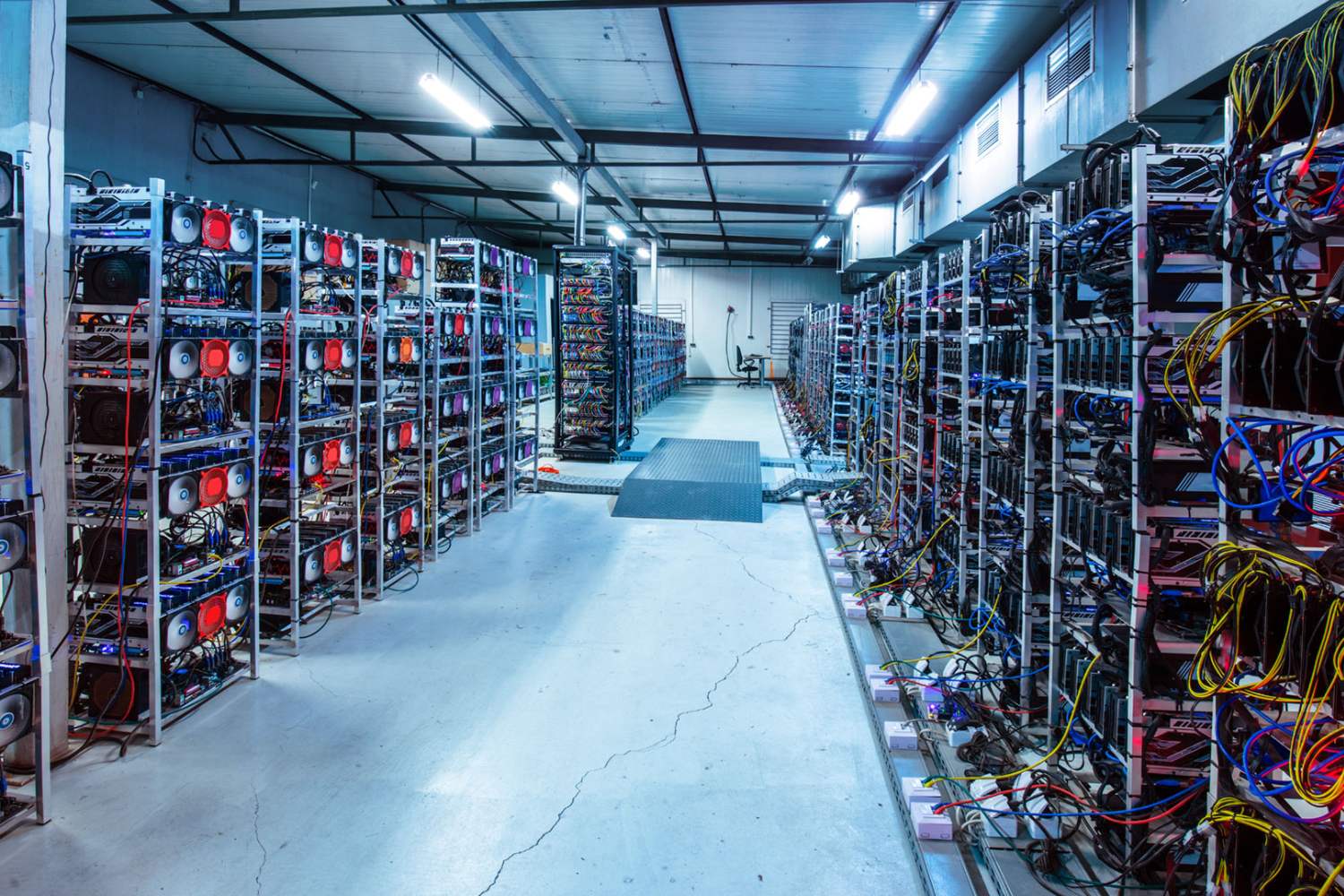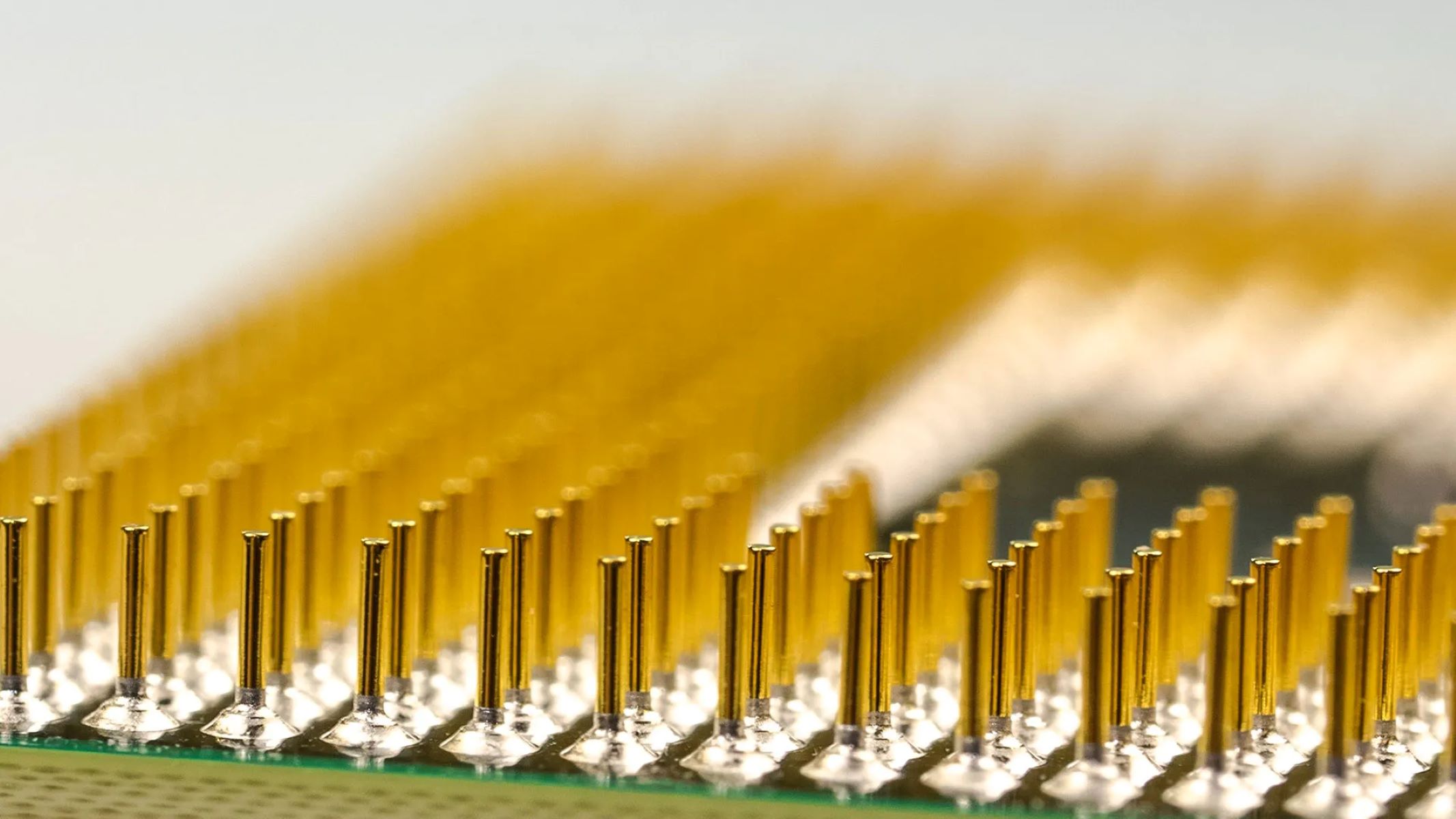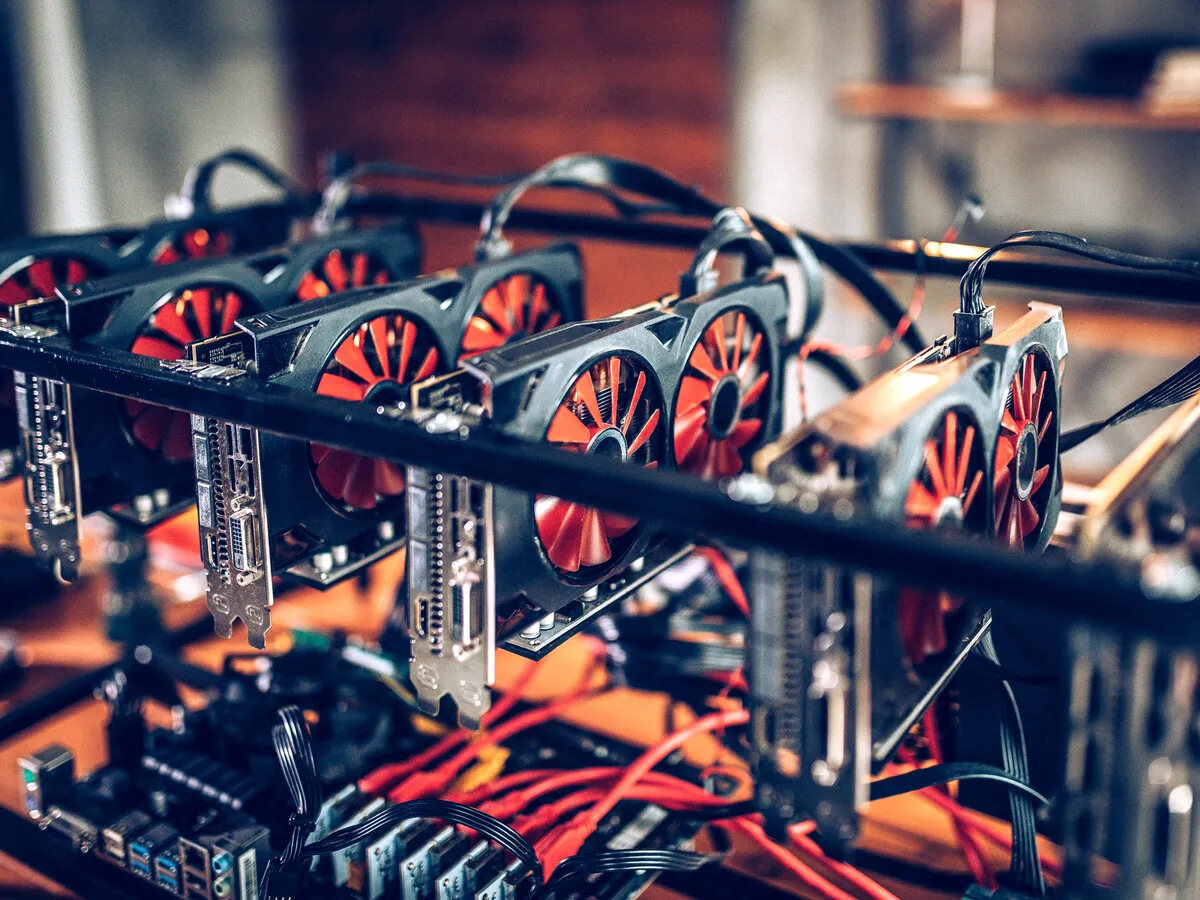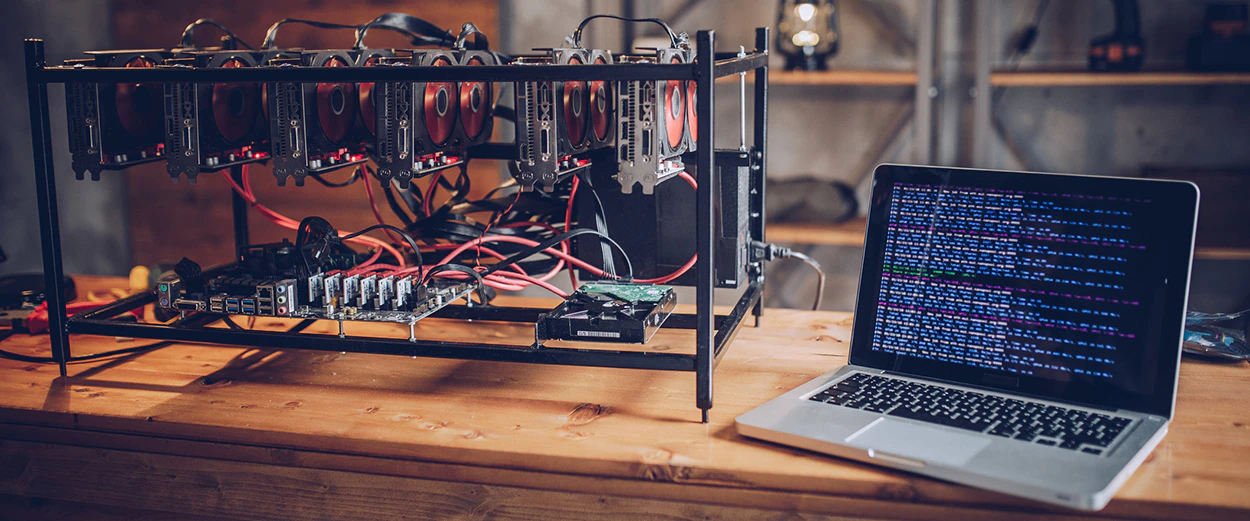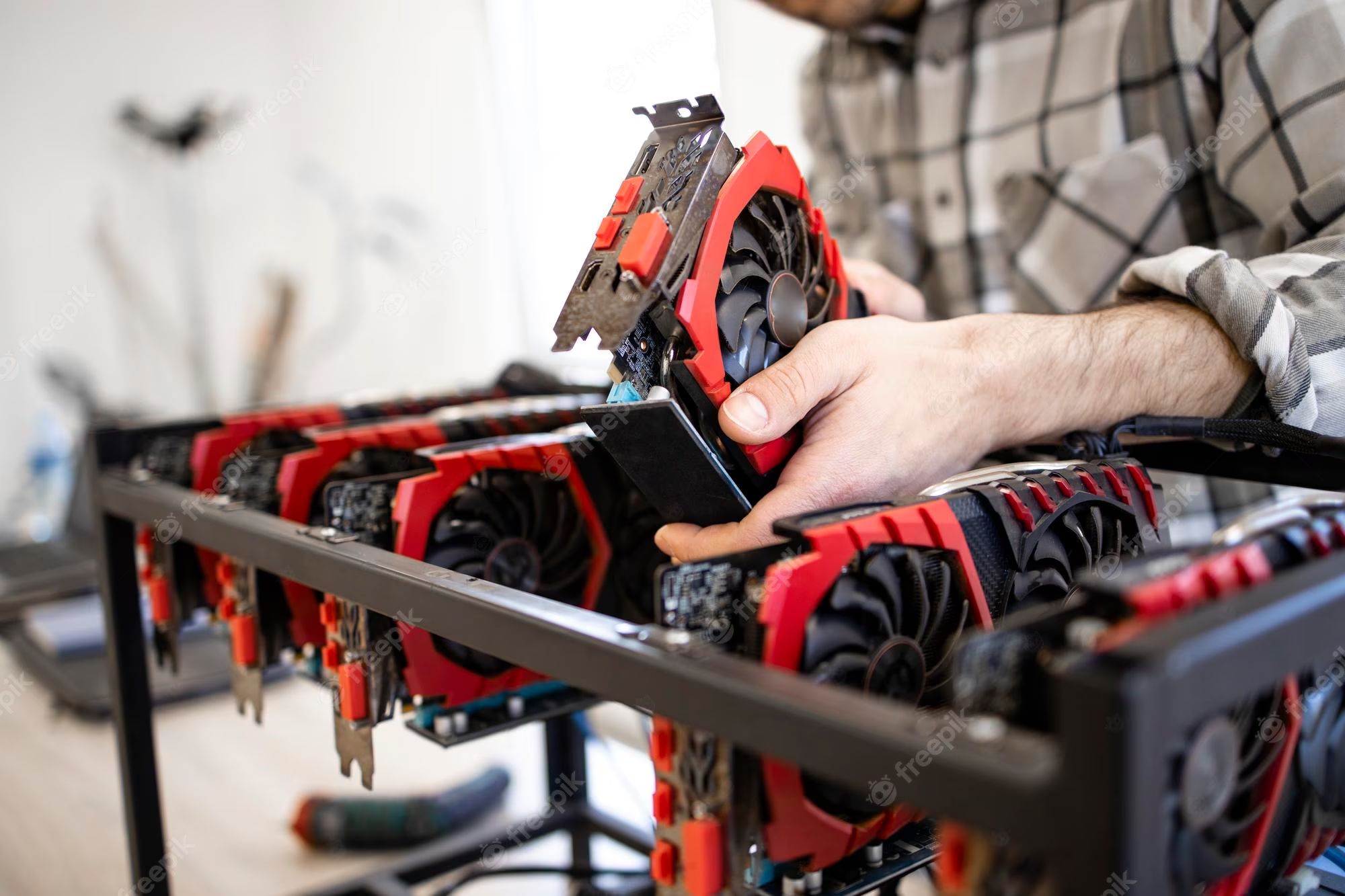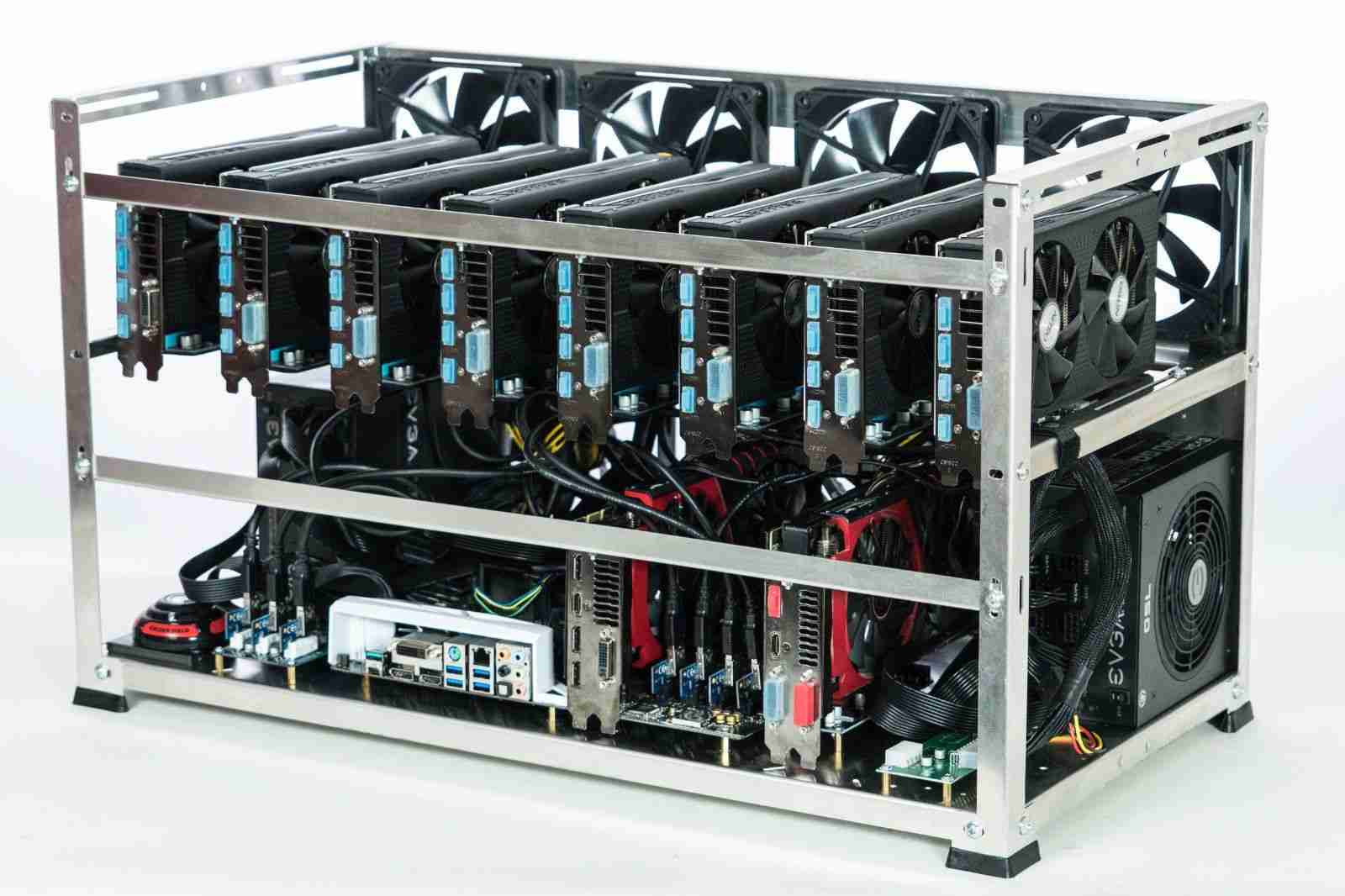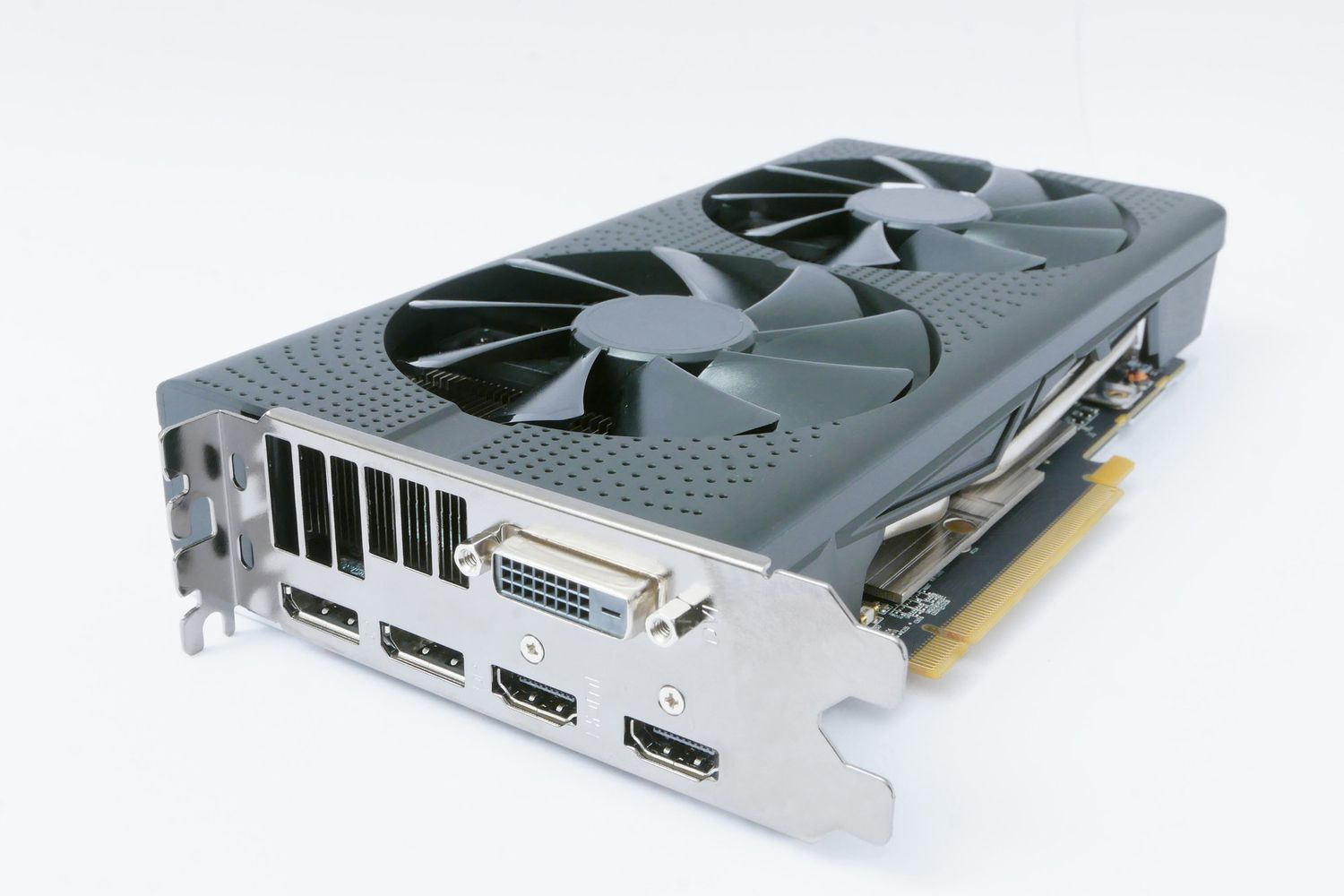Introduction
Welcome to the world of cryptocurrency mining, where powerful computers crunch complex mathematical algorithms to validate transactions and generate new coins. If you are venturing into the exciting realm of mining, you have likely encountered numerous technical terms, including RAM. In this article, we will explore the significance of RAM in the mining process and help you determine how much RAM you need for optimal performance.
RAM, short for Random Access Memory, plays a crucial role in the overall efficiency and speed of your mining operations. It is a type of computer memory that allows for quick data access by the CPU, storing information needed in real-time. In mining, RAM helps manage the various tasks required to solve cryptographic algorithms efficiently.
Understanding the importance of RAM in mining is essential for maximizing your profitability and preventing performance bottlenecks. The right amount of RAM ensures that your mining rig can handle the computational demands involved in solving complex mathematical puzzles.
Several factors influence the amount of RAM required for efficient mining. The type of cryptocurrencies you are mining, the mining software employed, and the mining rig setup all impact your RAM needs. It is crucial to strike a delicate balance, as inadequate RAM can lead to slow mining performance, while excessive RAM is an unnecessary expense.
In this article, we will outline the minimum RAM requirements for mining and provide recommendations based on various mining setups. We will also explore the concept of overclocking RAM to enhance your mining rig’s performance and share tips to optimize RAM usage in mining. By the end of this article, you will have a clear understanding of how much RAM you need for your specific mining needs.
What is RAM?
Before diving into the importance of RAM in mining, let’s start by understanding what RAM actually is. RAM, or Random Access Memory, is a type of computer memory that facilitates the quick and temporary storage of data that the CPU (Central Processing Unit) needs to access during real-time operations.
RAM is different from a computer’s permanent storage, such as the hard drive or solid-state drive (SSD). Unlike these storage devices, RAM provides fast and temporary storage that can be quickly written to and read from by the CPU. This allows the CPU to access data much faster than if it had to retrieve it from a slower storage medium.
When you open a program or run a task on your computer, the necessary data is loaded into RAM for the CPU to access and process. The CPU retrieves the instructions and data from RAM, performs the necessary computations, and then stores the results back in RAM or writes them to permanent storage.
RAM is measured in gigabytes (GB) and is a critical factor in determining a computer’s overall performance. More RAM enables your computer to handle more data and run multiple programs simultaneously without slowing down. It allows for smoother multitasking, faster data processing, and improved overall responsiveness.
In the context of cryptocurrency mining, RAM is essential for managing the computational tasks required to solve complex cryptographic algorithms. It helps store critical data and instructions needed to perform these calculations efficiently.
In summary, RAM is a vital component of a computer’s memory architecture that provides temporary storage for data that the CPU needs to access quickly. Its speed and capacity impact a computer’s performance, particularly in resource-intensive processes like mining.
The Importance of RAM in Mining
RAM plays a significant role in the mining process, influencing both the speed and efficiency of your mining operations. Here are a few key reasons why RAM is essential for successful mining:
1. Faster Processing Speed: When mining cryptocurrencies, your computer needs to solve complex mathematical algorithms to validate transactions and secure the network. RAM helps facilitate the quick retrieval and processing of the data required for these calculations. With more RAM, your mining rig can handle larger datasets and perform computations faster, increasing your chances of successfully mining blocks.
2. Efficient Task Management: Mining involves managing numerous tasks simultaneously, such as verifying transactions, storing blockchain data, and communicating with the mining pool or network. The amount of RAM you have determines how smoothly your mining rig can handle these tasks. Insufficient RAM can lead to slowdowns and delays, negatively impacting your mining efficiency and profitability.
3. Reduced Latency: RAM’s fast data access speeds help reduce latency, ensuring that your mining rig can quickly retrieve the necessary data for processing. This is crucial in mining, where speed is essential for staying competitive and maximizing your chances of mining a block before others do.
4. Stable Mining Operations: Insufficient RAM can lead to stability issues, such as crashes or freezing. When mining, stability is essential to maintain a consistent mining hash rate and avoid interruptions that could result in lost mining opportunities. Sufficient RAM ensures that your mining rig runs smoothly and reliably, minimizing the risk of downtime.
5. Compatibility with Mining Software: Some mining software may have specific RAM requirements. It is important to check the recommended RAM specifications for the mining software you plan to use. Insufficient RAM might prevent the software from running optimally or even cause compatibility issues.
Considering these factors, it is clear that RAM is a crucial component of a successful mining operation. It enables faster processing, efficient task management, reduced latency, stable operations, and compatibility with mining software. It is important to assess your mining requirements and choose an appropriate amount of RAM to optimize your mining rig’s performance.
Factors Affecting RAM Usage
Several factors influence the amount of RAM required for efficient mining. Understanding these factors can help you determine the optimal amount of RAM to support your mining operations. Here are the key factors affecting RAM usage in mining:
1. Mining Algorithm: Different cryptocurrencies utilize different mining algorithms, such as SHA-256, Scrypt, or Ethash. Each algorithm has unique memory requirements, affecting the amount of RAM you need. For example, Ethash-based cryptocurrencies like Ethereum typically require more RAM compared to SHA-256-based cryptocurrencies like Bitcoin.
2. Mining Software: The mining software you choose to run on your mining rig can also impact RAM usage. Some mining software may have higher memory requirements due to additional features or optimization techniques. It is essential to review the recommended RAM specifications for the mining software you plan to use to ensure your rig has enough memory to run it efficiently.
3. Mining Rig Setup: The configuration of your mining rig plays a significant role in determining RAM usage. Factors such as the number of GPUs, the type and size of the graphics memory (VRAM), and the intensity of mining operations can all affect the amount of RAM needed. More powerful mining rigs with multiple GPUs and high-intensity mining settings generally require more RAM to handle the increased computational load.
4. Operating System Requirements: The operating system (OS) running on your mining rig also influences RAM usage. Different operating systems have varying RAM requirements. For example, some versions of Windows may consume more RAM compared to lightweight Linux distributions. It is important to consider the RAM requirements of the OS, as it needs to share memory resources with other processes running on your mining rig.
5. Multitasking and Background Processes: If you plan to use your mining rig for other tasks besides mining, such as running a web server or managing other software applications, you need to account for the RAM requirements of those tasks as well. Running multiple processes simultaneously and having background applications can increase RAM usage, potentially impacting mining performance if there is insufficient memory available.
6. Future Expansion: It is always wise to plan for future expansion when determining your RAM requirements. Consider whether you may want to add more GPUs or increase the intensity of your mining operations in the future. Having some headroom in terms of RAM can help accommodate future upgrades and prevent the need for immediate hardware modifications.
By considering these factors, you can assess the RAM requirements for your mining setup more accurately. It is essential to strike a balance between having enough RAM to handle your mining operations efficiently and avoid overspending on excessive memory that may not provide significant performance gains.
Minimum RAM Requirements
While the exact minimum RAM requirements for mining can vary depending on the factors mentioned earlier, we can provide some general guidelines to help you get started. Keep in mind that these recommendations may not apply to all mining setups and should be adjusted based on your specific circumstances.
1. Entry-Level Mining: If you are just starting in mining and have a single GPU or a small mining rig, a minimum of 4GB of RAM should be sufficient. This amount of RAM can handle basic mining operations and ensure smooth performance when using lightweight mining software.
2. Mid-Range Mining: For mid-range mining setups with multiple GPUs and more intensive mining operations, it is recommended to have at least 8GB of RAM. This additional memory will provide more capacity for managing the increased computational load and help maintain stable mining operations.
3. High-End Mining: High-end mining rigs with multiple powerful GPUs and intensive mining settings may require even more RAM. In such cases, it is advisable to have 16GB or more of RAM to ensure optimal performance and stability.
Remember that these minimum RAM requirements are intended as a starting point and should be adjusted based on your specific mining needs. It is always beneficial to have more RAM than the minimum requirements to allow for smooth multitasking, future expansion, and to accommodate any unexpected resource-heavy tasks that may arise.
Additionally, it is essential to consider the RAM specifications recommended by the mining software you plan on using. Some mining software may have specific RAM requirements that could differ from the general guidelines mentioned here. It is recommended to check the software’s documentation or official website for recommended RAM specifications.
By meeting or exceeding the minimum RAM requirements for your mining setup, you can ensure smoother mining operations, minimize stability issues, and improve overall mining efficiency.
Recommended RAM for Different Mining Setups
When it comes to recommending the optimal amount of RAM for different mining setups, it is important to consider the specific requirements of your mining operation. While the minimum RAM requirements provide a starting point, having more RAM can significantly enhance your mining performance. Based on different mining setups, we provide the following recommendations:
1. Single GPU Mining: If you have a single GPU mining rig, it is recommended to have at least 8GB of RAM. This amount of memory will provide sufficient capacity for managing mining tasks while allowing for smooth operation of the mining software and the operating system.
2. Small to Medium-Sized Mining Rigs: For mining rigs equipped with multiple GPUs, particularly those with up to 6 GPUs, it is recommended to have 16GB of RAM. This increased memory capacity will support better multitasking, handle the computational load, and maintain stable mining operations.
3. Large-Scale Mining Rigs: If you are building a large-scale mining rig with more than 6 GPUs, it is advisable to have a minimum of 32GB of RAM. With a larger number of GPUs and intensive mining operations, the additional memory will help manage the increased computational demands and ensure optimal performance.
These recommendations go beyond the minimum requirements and are intended to provide smoother mining experiences, reduce potential bottlenecks, and improve overall mining efficiency. However, it is essential to consider other factors that may influence RAM requirements, such as the mining algorithm used, the type and size of VRAM, and the mining software employed.
Furthermore, it is important to note that these recommendations assume you are using the mining rig solely for mining purposes. If you plan to use your rig for other resource-intensive tasks simultaneously, such as running additional software applications or virtual machines, it may be wise to increase the recommended RAM capacity accordingly.
Always remember to scale up your RAM capacity in line with the specific requirements and circumstances of your mining setup. Having adequate RAM not only ensures the smooth functioning of your mining rig but also allows for better multitasking, future expansion, and improved stability.
Overclocking RAM for Better Performance
Overclocking RAM is a popular technique among enthusiasts and miners to boost the performance of their mining rigs. By increasing the clock speed and/or tightening the timings of the RAM modules, miners can potentially achieve faster data access speeds and improve overall mining efficiency. Here are some key points to consider when overclocking your RAM for better mining performance:
1. Research and Understanding: Before attempting to overclock your RAM, it is important to do thorough research and gain a solid understanding of the process. Familiarize yourself with your RAM’s specifications, its capabilities, and the potential risks associated with overclocking. Additionally, refer to manufacturer documentation and guides for specific guidelines related to your RAM modules.
2. Incremental Approach: When overclocking RAM, it is recommended to take an incremental approach. Start by gradually increasing the RAM clock speed or tightening the timings, and then test the stability of your mining rig. Monitor the system for any signs of instability or errors. If the system remains stable, you can continue to increase the overclocking parameters. However, be mindful not to push your RAM beyond its limits, as this can cause system crashes or data corruption.
3. Stress Testing: To ensure the stability of your overclocked RAM, it is crucial to perform stress testing. Use software applications specifically designed for stress testing RAM, such as MemTest86 or HCI Memtest. Running these tests for extended periods can help identify any stability issues or errors that may occur under high load conditions.
4. Cooling and Voltage Considerations: Overclocking RAM can increase its operating temperature. To mitigate this, ensure adequate cooling for your RAM modules and the surrounding components. Additionally, some RAM modules may require a slight increase in voltage to maintain stability when overclocked. However, it is crucial to exercise caution and refer to manufacturer guidelines to avoid excessive voltage that could damage the RAM or other components.
5. Backup and Restore Point: Before starting the overclocking process, it is wise to create a backup of your mining rig’s data and settings. This prepares you for any potential issues that may arise during the overclocking process. Additionally, creating a system restore point allows you to easily revert back to previous settings if needed.
6. Monitoring and Fine-tuning: After overclocking your RAM, closely monitor the performance and stability of your mining rig. Keep an eye on system temperatures, memory utilization, and mining hash rates. Fine-tune the overclocking parameters if necessary to achieve the desired balance between performance and stability.
Remember that overclocking RAM is not without risks. Pushing your RAM beyond its capabilities or misconfiguring settings can lead to system instability, data corruption, or even hardware damage. Consequently, it is crucial to proceed with caution, be aware of the potential drawbacks, and thoroughly understand the process before attempting to overclock your RAM for better mining performance.
Tips to Optimize RAM Usage in Mining
Optimizing RAM usage in mining can help improve the overall efficiency and performance of your mining rig. Here are some useful tips to help you maximize RAM utilization and ensure smooth mining operations:
1. Close Unnecessary Applications: Before starting your mining software, close any unnecessary applications running in the background. This helps free up RAM and ensures that the majority of memory resources are dedicated to mining operations.
2. Disable or Minimize System Processes: Identify and disable any unnecessary system processes or services that consume RAM. This can be done through the Task Manager (Windows) or Activity Monitor (Mac). By reducing the number of system processes, you can allocate more RAM to mining tasks.
3. Optimize Mining Software Settings: Review the settings of your mining software to ensure it is configured for optimal RAM usage. Some mining software allows you to fine-tune memory-related parameters. Adjusting these settings can help strike a balance between RAM allocation and overall mining performance.
4. Monitor Memory Usage: Use monitoring tools to keep track of your mining rig’s memory usage. This allows you to identify any memory-intensive processes or potential memory leaks. Keeping an eye on memory usage helps identify opportunities for optimization and prevents excessive RAM consumption.
5. Update Mining Software and Drivers: Regularly update your mining software and drivers to the latest versions. Updated software often includes performance improvements and bug fixes that can enhance RAM utilization and overall mining efficiency.
6. Optimize Operating System Settings: Optimize your operating system settings to minimize RAM usage. Disable visual effects, limit startup programs, and adjust virtual memory settings to strike a balance between performance and RAM utilization.
7. Upgrade to Faster RAM: Consider upgrading to faster RAM modules if your current ones are causing performance bottlenecks. Faster RAM can improve data access speed, leading to quicker mining computations and more efficient RAM utilization.
8. Regularly Clean and Maintain Your Mining Rig: Dust accumulation and inadequate cooling can lead to overheating, which can negatively impact RAM performance. Regularly clean your mining rig and ensure proper cooling to optimize RAM functionality and prevent overheating-related issues.
9. Optimize GPU Memory Usage: GPUs have their memory (VRAM) in addition to system RAM. Optimize GPU memory usage by adjusting mining software settings and reducing unnecessary memory allocations. This can free up system RAM for other mining operations.
10. Periodically Restart Your Mining Rig: Restart your mining rig periodically to clear any memory leaks and refresh system resources. This helps prevent accumulated memory fragmentation and ensures efficient RAM utilization.
By implementing these tips, you can optimize RAM usage in your mining rig, improve overall mining performance, and maximize your mining profitability.
Conclusion
RAM is a critical component in cryptocurrency mining, playing a vital role in the overall speed and efficiency of your mining rig. Understanding the importance of RAM and optimizing its usage can significantly improve your mining performance and profitability.
In this article, we explored what RAM is and why it is crucial for mining operations. We discussed the various factors that can affect RAM usage, such as the mining algorithm, mining software, mining rig setup, and operating system requirements. By considering these factors, you can determine the optimal amount of RAM needed for your specific mining setup.
We also provided recommendations for minimum RAM requirements based on different mining setups, from single GPU mining rigs to large-scale operations. These recommendations serve as starting points and can be adjusted to meet your specific mining needs.
Additionally, we delved into the world of overclocking RAM and provided tips on how to safely overclock your RAM for enhanced mining performance. Overclocking can help improve data access speeds and boost overall mining efficiency when done cautiously and with proper research.
Lastly, we discussed several tips to optimize RAM usage in mining. By closing unnecessary applications, minimizing system processes, optimizing mining software and operating system settings, monitoring memory usage, and performing regular maintenance on your mining rig, you can maximize RAM utilization and ensure smooth mining operations.
Remember, optimizing RAM usage is just one aspect of creating an efficient and productive mining rig. It is important to consider the overall hardware setup, cooling, power consumption, and other factors to ensure the best possible mining performance.
With an understanding of the significance of RAM in mining and the knowledge of how to optimize its usage, you are well-equipped to make informed decisions and maximize the potential of your mining rig. By implementing the strategies and recommendations outlined in this article, you can enhance your mining efficiency, increase your chances of mining success, and ultimately improve your profitability in the exciting world of cryptocurrency mining.







